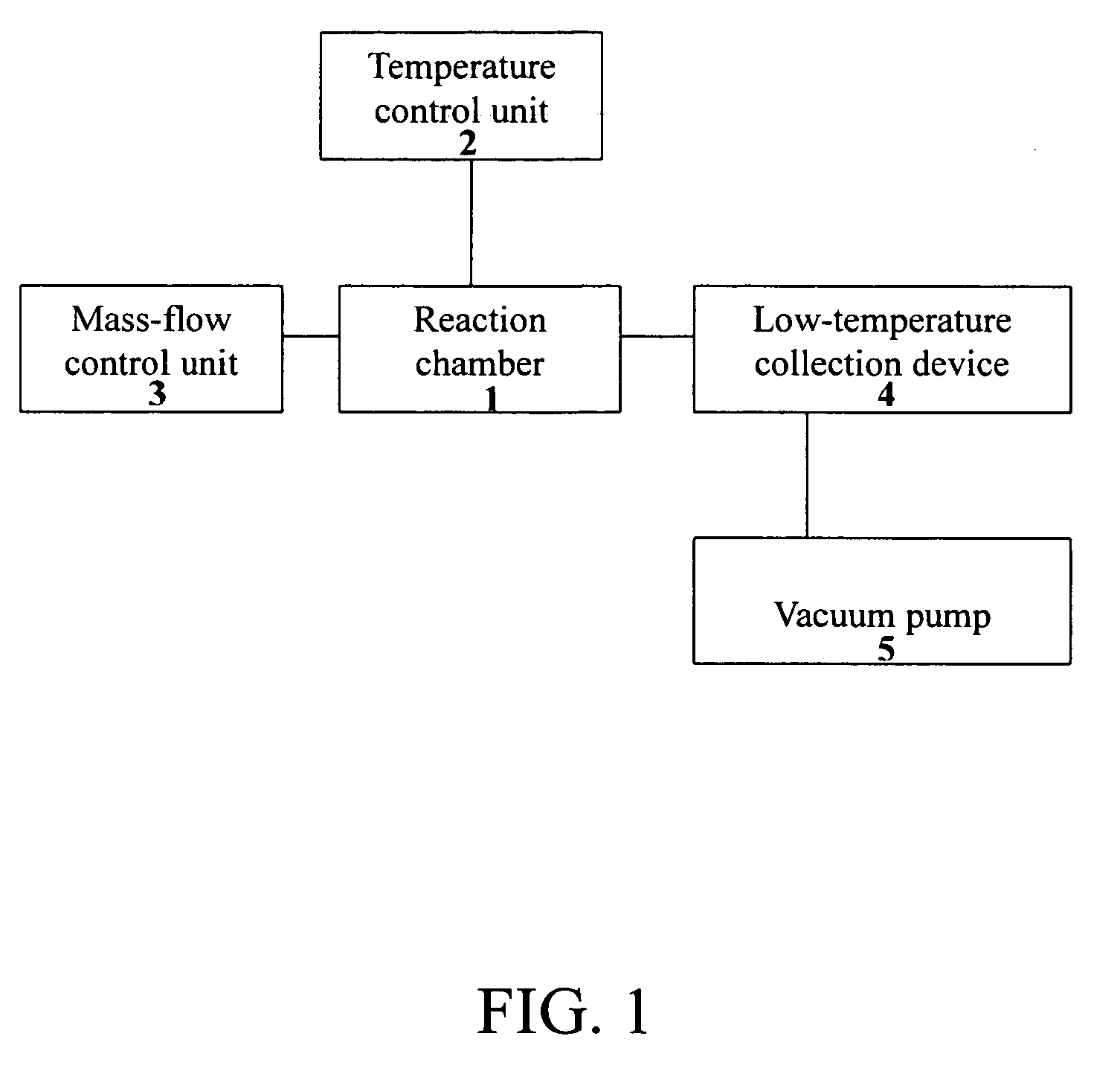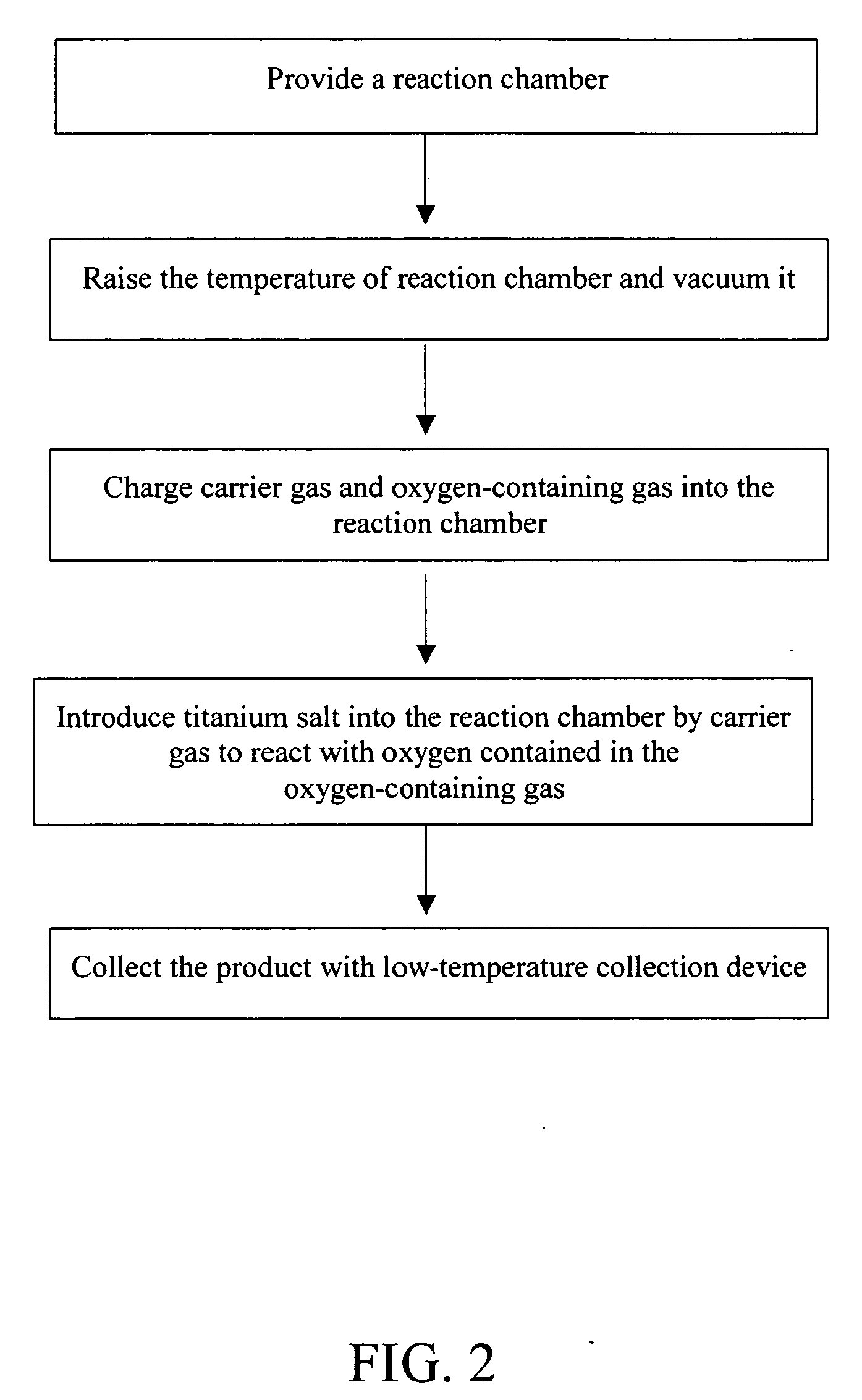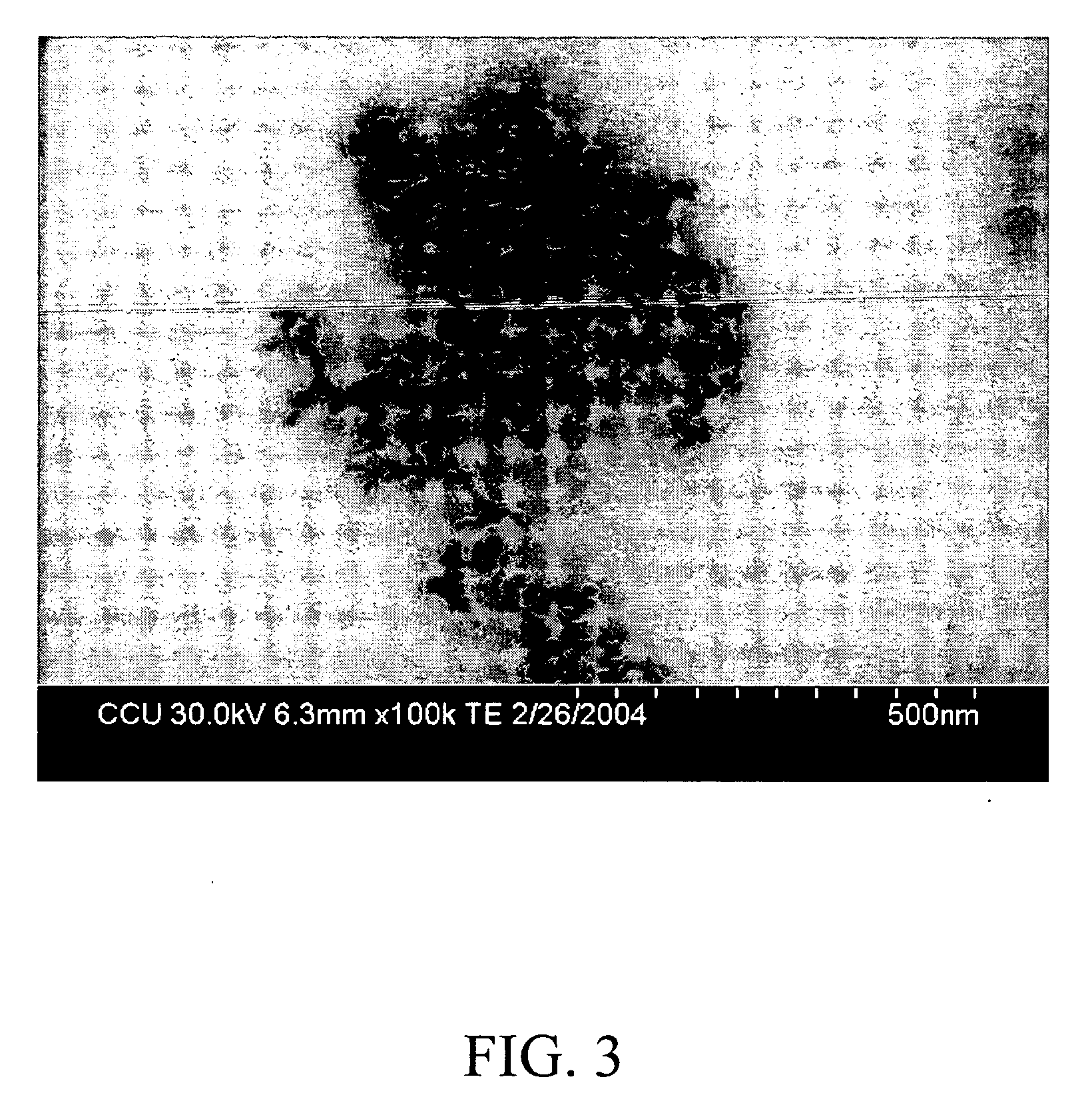Visible-light-activated photocatalyst and method for producing the same
a technology of visible light and photocatalyst, which is applied in the field of photocatalyst preparation, can solve the problems of not only tedious and time-consuming whole process, but also allows only batch production that produces limited output, and fails to meet the needs of continuous mass production. , to achieve the effect of excellent anatase crystallinity, simple steps and time saving
- Summary
- Abstract
- Description
- Claims
- Application Information
AI Technical Summary
Benefits of technology
Problems solved by technology
Method used
Image
Examples
example 1
Preparation of Visible-Light-Activated TiO2 Photocatalyst Powder by Chemical Vapor Deposition (CVD)
[0025] First raise the temperature of quartz tube used as reaction chamber to 700° C., and in the process of heating, keep the pressure in the reaction chamber under 10 torr with a pump, and charge 40 sccm nitrogen gas into the quartz tube to purge excess gas. When the temperature of quartz tube reaches 700° C., adjust the constant feed of oxygen gas into the quartz tube to 200 sccm and introduce cooling water below 5° C. into the low-temperature collection device; then feed alkoxy titanium into the quartz tube at the rate of 1 ml / min using nitrogen as carrier gas. The alkoxy titanium reacts with oxygen in the 700° C. quartz tube to form titanium dioxide powder. Next use the negative pressure provided by the pump to remove the titanium dioxide powder from the reaction chamber into the low-temperature collection device with cooling water below 5° C. passing through.
[0026]FIG. 7 shows ...
PUM
| Property | Measurement | Unit |
|---|---|---|
| temperature | aaaaa | aaaaa |
| temperature | aaaaa | aaaaa |
| grain size | aaaaa | aaaaa |
Abstract
Description
Claims
Application Information
 Login to View More
Login to View More - R&D
- Intellectual Property
- Life Sciences
- Materials
- Tech Scout
- Unparalleled Data Quality
- Higher Quality Content
- 60% Fewer Hallucinations
Browse by: Latest US Patents, China's latest patents, Technical Efficacy Thesaurus, Application Domain, Technology Topic, Popular Technical Reports.
© 2025 PatSnap. All rights reserved.Legal|Privacy policy|Modern Slavery Act Transparency Statement|Sitemap|About US| Contact US: help@patsnap.com



